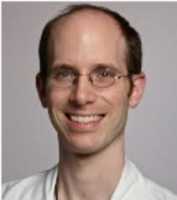17 Feb Machines Can Be Taught Natural Language Processing To Read Radiology Reports
MedicalResearch.com Interview with:
Eric Karl Oermann, MD
Instructor
Department of Neurosurgery
Mount Sinai Health System
New York, New York 10029
MedicalResearch.com: What is the background for this study? What are the main findings?
Response: Supervised machine learning requires data consisting of features and labels. In order to do machine learning with medical imaging, we need ways of obtaining labels, and one promising means of doing so is by utilizing natural language processing (NLP) to extract labels from physician’s descriptions of the images (typically contained in reports).
Our main finding was that (1) the language employed in Radiology reports is simpler than normal day-to-day language, and (2) that we can build NLP models that obtain excellent results at extracting labels when compared to manually extracted labels from physicians.
MedicalResearch.com: What should readers take away from your report?
Response: My main takeaway is that .natural language processing, which is a very challenging problem, is easier in Radiology due to the nature of the language. Radiology reports are often standardized to some degree, and the lexicon is constrained by the domain of the reports – there is only so much one can say about a non-contrast head CT. That said, this is just one of many steps that we need to perform prior to doing machine learning with medical imaging.
MedicalResearch.com: What recommendations do you have for future research as a result of this work?
Response: There is so much to do! I think a lot more research needs to go into associating natural language processing derived labels with specific imaging findings, delineating how much noise we are injecting into imaging models using these labels, and how much noise different models can tolerate and what are the specific sources of the noise that they can’t. Last, but not least, what can we learn from the images themselves, and how can that contribute to our understanding of the text?
MedicalResearch.com: Is there anything else you would like to add?
Response: My only other comment is that I think this is an exciting time to be studying Medicine, and I hope that more people with quantitative skills will consider the profession! It is possible to be involved with this kind of research as a pure clinician or a pure software engineer, but having a medical degree and a strong technical skillset leads to a radically different kind of researcher such as John Zech (the first author on this study). Regarding disclosures, several of our team members work or have worked for Merck and Verily Life Sciences. All of the research presented in this work was performed at Mount Sinai and neither company was directly involved.
Citations:
Radiology. 2018 Jan 30:171093. doi: 10.1148/radiol.2018171093. [Epub ahead of print]
Natural Language-based Machine Learning Models for the Annotation of Clinical Radiology Reports.
Zech J1, Pain M1, Titano J1, Badgeley M1, Schefflein J1, Su A1, Costa A1, Bederson J1, Lehar J1, Oermann EK1.
[wysija_form id=”3″]
The information on MedicalResearch.com is provided for educational purposes only, and is in no way intended to diagnose, cure, or treat any medical or other condition. Always seek the advice of your physician or other qualified health and ask your doctor any questions you may have regarding a medical condition. In addition to all other limitations and disclaimers in this agreement, service provider and its third party providers disclaim any liability or loss in connection with the content provided on this website.
Last Updated on February 17, 2018 by Marie Benz MD FAAD

